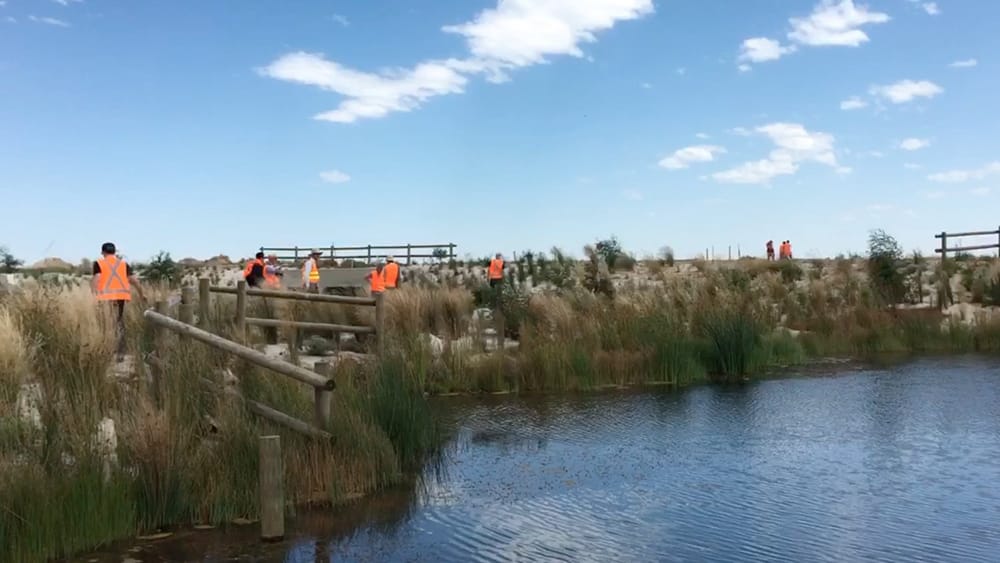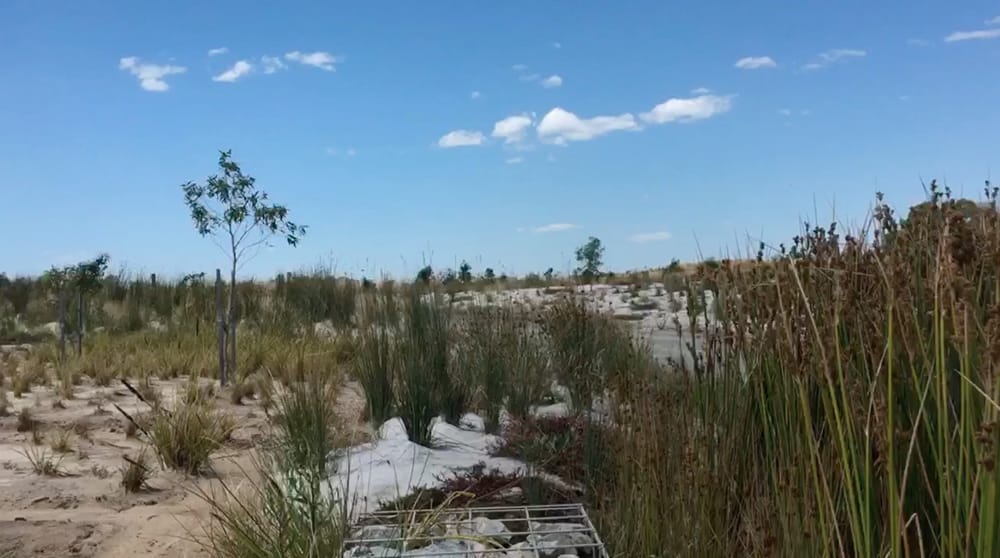Feature Article: Collaboration drives innovation at Officer
Back in 2010, at the first project team meeting of the Cities as Water Supply Catchments (CaWSC) demonstration project at Officer, the opportunity to design and deliver a man-made creek system was embraced by all stakeholders. Named Gum Scrub Creek, the system would be a central part of the larger development of Officer: a 320 ha outer urban site in south-east Melbourne, to be transformed into a town centre along with residential neighbourhoods, using high-quality urban design with sustainable infrastructure at its core. The vision for Officer was one of exemplary amenity and highly efficient water use, along with opportunities to reimagine outer urban development that would accommodate both nature and people.

Gum Scrub Creek provided a suitable site for the CaWSC program – later incorporated into the CRC for Water Sensitive Cities (CRCWSC) – to challenge traditional stormwater management for future residential development. It was the perfect blank canvas on which to test innovative theories of sustainable infrastructure, rather than implementing them piecemeal and reactively.
From idea to action
The concept of overturning the traditional “pit and pipe” stormwater treatment system through what is called daylighting (uncovering) of stormwater pipes met with great enthusiasm, but also with a shared appreciation of the challenges. The daylighting of pipes upstream produces connected waterways that mimic the natural evolution of creeks, rivers, and estuaries. Rather than relying on traditional pit and pipe infrastructure, water quality treatment, storage, and flow regulation are managed through tributaries to the main creek line, in turn creating landscaped connections that carry stormwater runoff into the system.
Initiated by the client and by Places Victoria (a CRCWSC participant formally called VicUrban), the process of testing, designing, documenting, constructing, and analysing this line of action soon took shape. Collaboration between consultants (engineers, ecologists, landscape architects, and urban designers) and authorities (Cardinia Shire Council, Melbourne Water, and the former Department of Environment and Primary Industries – now Department of Environment, Land, Water and Planning) identified areas where the design could be pushed beyond best practice and into the realm of true innovation. Each discipline brought knowledge, experience, and technical capacity – delivering a coordinated response to the challenge of sustainable stormwater connections, through residential development, into a constructed creek system and locally appropriate waterways.
This multidisciplinary approach created a forum of shared knowledge that Karsha Dickinson from Outlines Landscape Architecture attributes to the high-quality landscape constructed in Officer. “An inherent passion between disciplines to push the boundaries of traditional stormwater catchment design”, Karsha explains, “produced an outcome that goes beyond its initial function of providing infrastructure to neighbouring residential development, and enters the realm of a built ecology that provides habitat and recreational spaces within a new community.”
Lateral fingers and urban sponges
Five years on, the transformation of a derelict farm drain into a 10 ha constructed creek system is ready to be celebrated. Initial theory has led to the evolution of a built landscape known as the lateral finger: a tributary to the main creek line that revealed the main stormwater pipe almost 50 m north-west of the creek, traversing an open-space reserve between future residential developments. A passive rock-lined swale then carries this overflow down to the urban sponge: an offline vegetation system that filters and reduces the amount of runoff into the online creek system. The key outcomes of this system are that it regulates the velocity of water entering the creek system in large rain events, and treats overland flow through a series of urban sponges and sedimentation ponds before entering the online creek system, which improves the water quality downstream.

Setting a new benchmark
The first ever application of lateral fingers and urban sponges has produced a demonstration site that is invaluable as a case study for future projects. Driven by a shared understanding of the overall goal, the team delivered a site that raises the bar in water sensitive urban development. Future industry and research-based collaborations will also benefit from a number of less tangible outcomes.
CRCWSC researchers involved in the Officer demonstration project gained an appreciation for the different roles and experience each consultant brought to the project and understanding of the process in delivering large scale urban developments to help drive the transition to increased water sensitivity. According to Ross Allen, Project Leader on Cities as Water Supply Catchments – Integration and Demonstration through Urban Design (D1.1), “Researchers must be aware of, and sensitive to, changing project dynamics, review their implications, and maintain a flexible approach while staying focused on the strategic goals of the project.”
This combined knowledge and commitment to the design and construction of the project delivered innovation, said Ross: “without the support of a visionary developer, state government authorities, a committed consultant team and expert contractors, the extent of works delivered on site would not have been realised”.
Supporting each other’s role within the team, both Ross and Karsha agree: developing trust among stakeholders and interdisciplinary consultants was a key factor in the successful project outcomes at all phases: design, construction, and implementation. The ability to translate theory into tangible built outcomes is the true test of such a collaboration.
Nicola Markus for the Mind your Way team